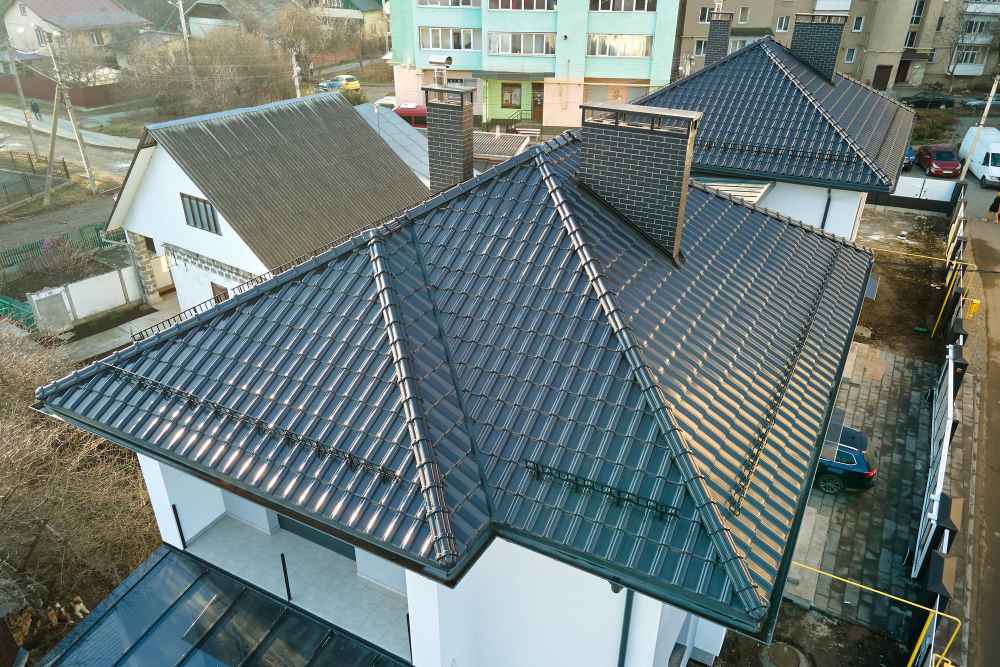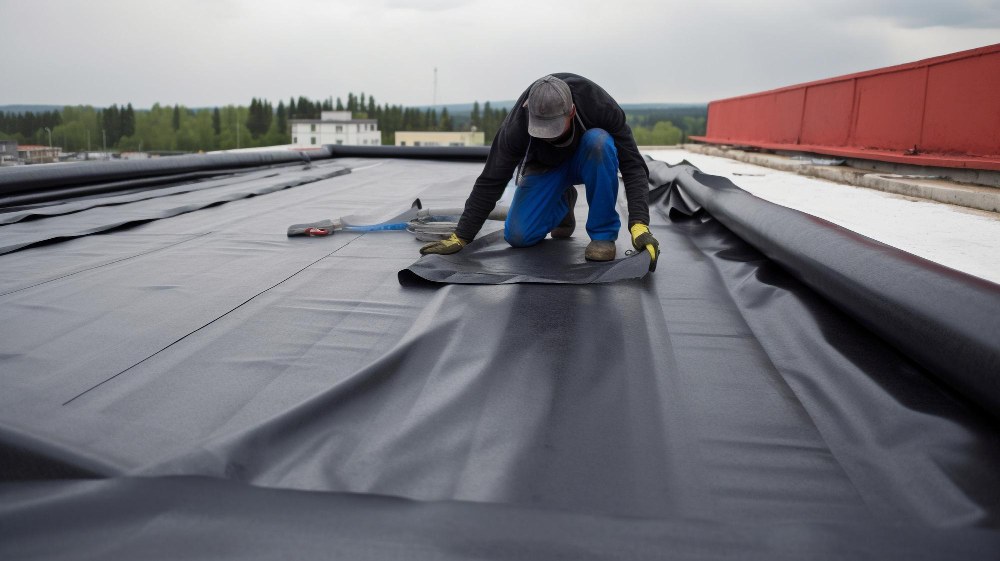If you are looking to build a new flat roof or improve the existing one, you are mostly provided with these two design options:
- Cold flat roof
- Warm flat roof
A flat roof has a 10-degree or lesser pitch, and the terms “cold flat roof design” or “warm flat roof design” are applicable concerning the structural substrate, which can be a concrete roof deck, OSB, plywood, or profiled steel.
Understanding the differences among these flat roof design types is essential to make informed decisions about insulation, energy efficiency, and comfort.
Cold Flat Roof
This type of flat roof design requires the insulation layer between or under the timber rafters to match its level with the ceiling joist. As the substrates; rafters and any roof space are present on the cold side of the insulation, it is called a cold flat roof design. Therefore, the timbers and roof remain cold, and need a breathable membrane between the insulation and roof structure.
However, when warm and damp air permeates up through the ceiling and comes in contact with the cold flat roof space, it can result in condensation of air due to change in temperature. That’s why, it requires sufficient flat roof space ventilation for efficient removal of this air.
Advantages of Cold Flat Roof Design
- Easy to install on new roofs
- Cost-effective
- Creates low impact
- Requires less build-up
- Compatible with all roof coverings
- Maintains consistent indoor temperature
- Reduces carbon footprint and GHG (Greenhouse Gas) emissions
- Reduces energy bills
Disadvantages of Cold Flat Roof Design
- Tricky to install on the existing flat roofs.
- Requires a suitable ventilation system to avoid damp conditions due to the presence of vapors
- Has more chances of moisture vapour permeation.
- Has the potential to cause thermal bridging.
- Needs more time to insulate the already constructed flat roof.

Warm Flat Roof
In this flat roof design, the insulating layer is present above the roof structure. As the flat roof structure and substrate are on the warm side of the insulation, it is referred to as a warm flat roof design. It helps to maintain a similar temperature of the roof outside and loft area inside the building. Therefore, it has lesser chances of condensation.
A warm flat roof design has been adopted to deal with the additional water vapour content due to changes in living patterns, such as more time spent indoors for washing and cooking. Therefore, there should be adequate ventilation for preventing moist air accumulation and condensation to save the roof structure from deteriorating.
Advantages of Warm Flat Roof Design
- Simple to design
- Provides easy and effective building insulation
- Allows heat conservation
- Allows moisture escape and prevents damp conditions
- Compatible with almost all roof coverings except metallic roofs
- Preserves the VCL’s (Vapor Control Layer’s) integrity
- Reduces thermal bridging
- Improves energy efficiency
- Requires low maintenance
- Prevents ice dam formation
Disadvantages of Warm Flat Roof Design
- Requires scaffolding
- Difficult installation
- Needs deeper construction
- Reduces the room height
- Impedes doors’ and windows’ openings
Warm Flat Roof vs. Cold Flat Roof
| Warm Flat Roof | Cold Flat Roof |
| Insulation is present on the roof deck’s top | Insulation present between the rafters |
| More energy efficiency | Less energy efficiency |
| Requires more cost | Requires less cost |
| Easy to install | Difficult to install |
| Cannot support plant growth | Supports plant growth |
| Cannot support pedestrian traffic | Can support pedestrian traffic |
| Lower risk of thermal bridging | Higher risk of thermal bridging |
| Higher risk of overheating | Lower risk of overheating |
| Requires vapour control layer | Does not require a vapor control layer |
| Fewer chances of moisture construct | More chances of moisture construct |
Things to Consider While Selecting Cold or Warm Flat Roof
While choosing a cold or warm flat roof design, you should consider your requirements, such as:
- Accessibility
- Budget
- Condensation
- Insulation
- Ventilation

